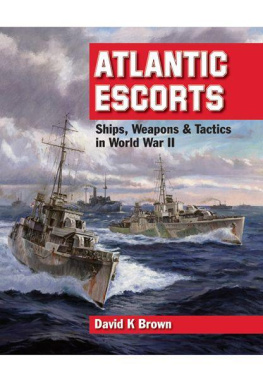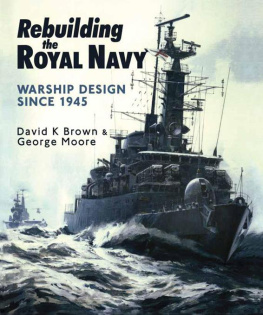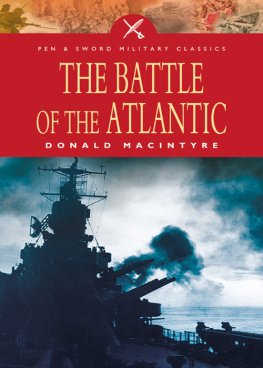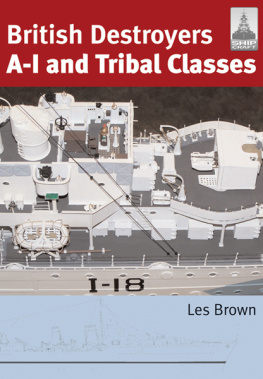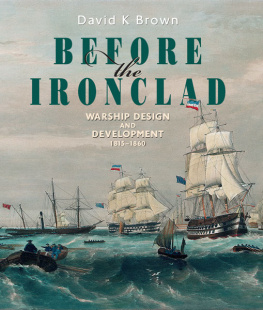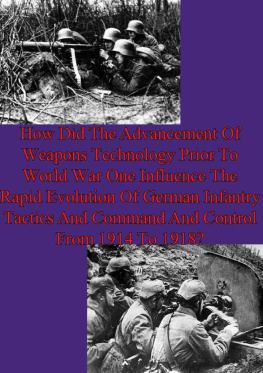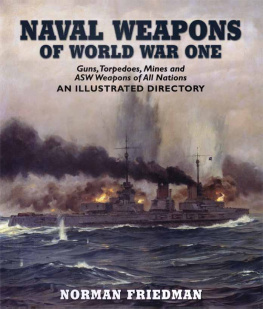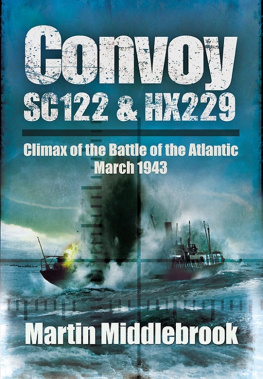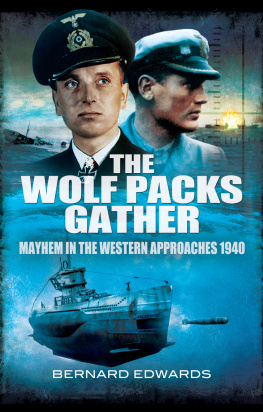
Hesperus, one of the most famous ships in the Atlantic battle, seen here in the Mersey. She was the leader of Captain Macintyres B2 Escort Group. It was Hesperus which carried the body of the famous Captain Johnnie Walker for burial at sea. Though her ensign appears to be at half mast in this photo, it was most probably taken in early 1945, a year later than the funeral.

Copyright David K Brown 2007
First published in Great Britain in 2007 by
Seaforth Publishing
An imprint of Pen & Sword Books Ltd
47 Church Street, Barnsley
S Yorkshire S70 2AS
Website: www.seaforthpublishing.com
Email:
British Library Cataloguing in Publication Data
Brown, D K (David K)
Atlantic escorts : Ships, weapons and tactics in World War II
Warships - History - 20th century 2. Anti-submarine
warfare - History 3. World War, 1939-1945 - Campaigns - Atlantic Ocean
I. Title
623.825409044
ISBN-13: 9781844157020
ISBN 978-1-84415-702-0
EPUB ISBN: 978-1-78346-901-7
PRC ISBN: 978-1-78346-668-9
All rights reserved. No part of this publication may be reproduced or transmitted in
any form or by any means, electronic or mechanical, including photocopying,
recording, or any information storage and retrieval system, without prior
permission in writing of both the copyright owner and the above publisher.
The right of David K Brown to be identified as the author of this work has been
asserted by him in accordance with the Copyright, Designs and Patents Act 1988.
Designed and typeset by Mousemat Design Limited
Printed and bound in China
Contents
Glossary
AA | anti-aircraft |
ADNC(P) | Assistant Director of Naval Construction (Production) |
AES | Admiralty Experimental Station (Parkeston Quay, Harwich), pioneer of asdic |
AFO | Admiralty Fleet Order |
AP | armour-piercing (of naval or artillery shells) |
A/S | anti-submarine |
ASI | Admiralty supply items |
ASV | air-to-surface-vessel (of radar) |
ASW | anti-submarine warfare |
BL | breech-loading (of guns); in breech-loading, the shell was separate from the bagged charge (see ) |
CAFO | Confidential Admiralty Fleet Order |
CNO | Chief of Naval Operations (US Navy post) |
DMWD | Director of Miscellaneous Weapons Department |
DNC | Director of Naval Construction |
DNO | Director of Naval Ordnance |
FAA | Fleet Air Arm |
full period | in oscillatory motions such as roll, the period is the time from out to out, and back |
GCCS | Government Code and Cipher School, Bletchley Park |
GM | metacentric height, a measure of the stability of a ship |
HA | high-angle (of guns) |
HE | high-explosive |
HF/DF | high-frequency direction finding |
LSH(S) | Landing Ship Headquarters (Small) |
MASB | motor anti-submarine boat |
Mk 24 mine | US anti-submarine homing torpedo |
mld | moulded to the inside of the hull plating; measurement of vessels draught |
oa | length overall |
pp | length between perpendiculars |
PPI | plan position indicator |
QF | quick-firing (of guns); in quick-firers, the shell and brass cartridge were in one piece (see ) |
RCAF | Royal Canadian Air Force |
RCN | Royal Canadian Navy |
RDF | radio direction finding (the early cover name for radar) |
TBS | inter-ship radio, sometimes interpreted as talk between ships |
vanishing angle of stability | the angle of heel at which the vessel will continue to roll over and capsize; it is a theoretical figure, since seawater is likely to have started to enter through the vessels various ports and apertures before this angle is reached |
WAIR | W class destroyers converted for anti-aircraft duty |
Introduction
T he Battle of the Atlantic was the biggest battle of World War II, and yet little known to the public. It was big in geographical extent; from British harbours to North America on the convoy routes is some 3,000 miles, whilst the battle ranged from Greenland in the north to the Caribbean in the south. It was big in human tragedy; some 23,000 merchant seamen were lost, together with numerous RN, RCN and other naval personnel, air force crews of many nationalities and, on the Axis side, 27,000 U-boat crew. It was the longest battle of the war, with the first sinking taking place on 3 Sept 1939 and the last on 6 May 1945.

A W Watson, Assistant Director of Naval Construction, was responsible for most British escort design. The Director of Naval Construction, Sir Stanley Goodall, was to write in 1940, Watson is a really good man.
There have been fine general histories of the battle but the subject is too vast for any one book. This volume will deal with escort vessels, their crews, sensors and weapon systems, together with the supporting systems that directed the battle, trained their crews and maintained their hardware. No tool is effective if the operator is unskilled and some crew members had never seen the sea before their first operational voyage.
Surface escort vessels sank 225 submarines, mainly in the earlier years of the war, when the RAF operated obsolescent aircraft that were of short range and equipped with ineffective weapons. From 1943 onwards these faults were overcome and, with ships and aircraft operating under common control, the RAF, RCAF and FAA came into their own, sinking 228 U-boats at sea. However, it is not unfair to say that the battle was largely won by the time that aircraft became effective.
This book only outlines the operational aspects of the battle itself, showing how problems in equipment, training and operational control were overcome. Reaction to a new threat was inevitably slow; it took fifteen to eighteen months to get a new class of ship from drawing bench to sea, and new weapons took even longer. Success depended more on anticipation than reaction time, though sometimes reaction was very swift; for example, the original aerial for the 268 radar was designed and built within a week.
Next page
